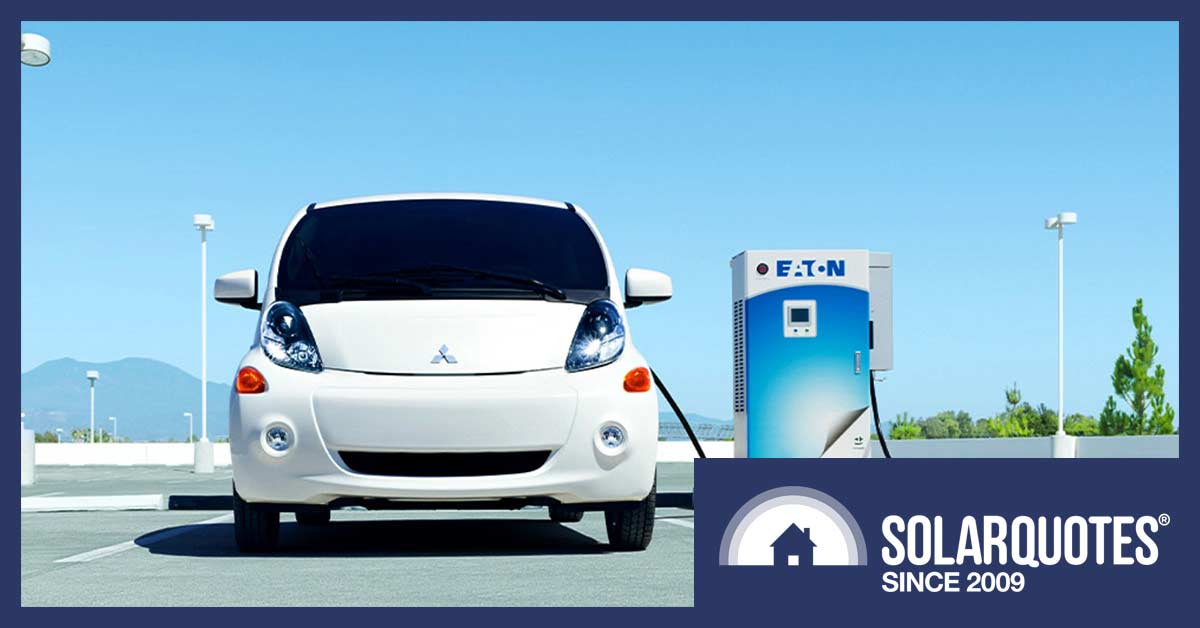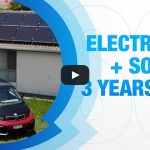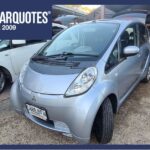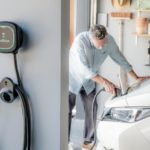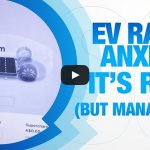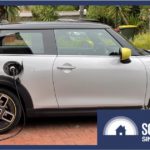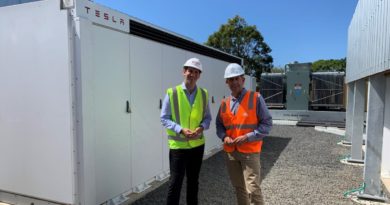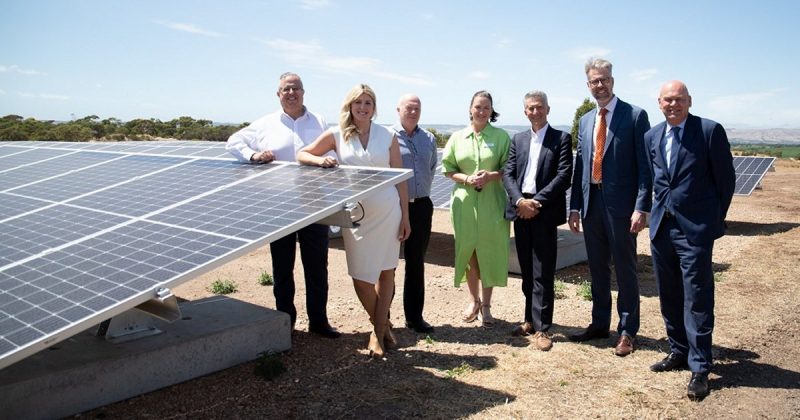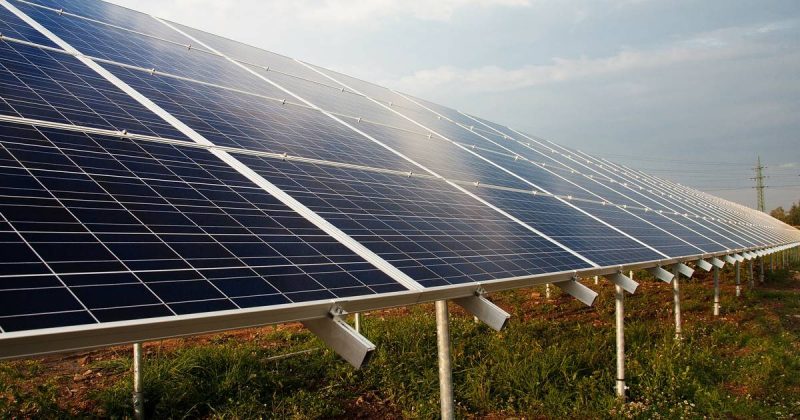I Just Bought The Cheapest Electric Car In Australia
Trawling the internet the other day, I saw an article proclaiming Australia’s cheapest electric vehicle is a 10-year-old Mitsubishi i-MiEV. The headline struck me in particular – because I bought it.
Actually, I bought the sister car of this i-MiEV from the same dealer: 25,000 km on the clock for a somewhat ludicrous seventeen grand plus rego.
The i-MiEV is diminutive enough that I can drive it through just one of the double gates at home, and of course, just like the original Mini, it makes everything else in the car park look like a totally unnecessary behemoth. Especially the horribly compromised, hopelessly heavy, dual cab 4wd grocery getters.
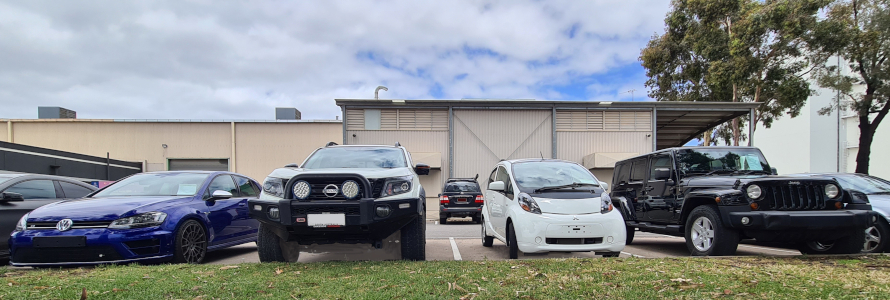
It’s not just the easy parking, note the size of the tyres.
I could wax on with the numbers motoring geeks love: 180 Nm of torque might be a bit abstract, but let’s just sum that up as ‘fun’ in an electric car barely weighing a ton.
How Much Power?
If you mash the accelerator to the floor, the iMiev motor will deliver a peak output of 47 kilowatts.
In car terms, that’s pretty modest. A Nissan Navara pictured above has three times the power. A prime mover has 10 times as much power, with torque that would twist the iMiev like a damp tea towel.
Now compare that to an average household. The electricity service from the street delivers 230v x 63amps = 14.5 kilowatts. Your average 6.6 kW solar power system on the roof will, at best, deliver 5 kilowatts.
How Much Energy Storage?
Home batteries start at about 6.5 kilowatt hours, the Tesla Powerwall is around 13 kilowatt hours and a typical off-grid house needs two or three times more.
The “fuel tank” in the iMiev is a battery with 16 kilowatt hours capacity. Again, it’s pretty modest compared to other electric vehicles such as a new Nissan Leaf with 60 kilowatt hours; or a flagship model Tesla with 100 kilowatt hours.
So why am I highlighting the hours?
When you plug an electric car in with a 7.5 kilowatt EV charger, it will be a significant demand on the overall capacity of your grid connection. Unlike cooking eggs or making toast, charging goes on for hours on end. This is why it’s important, when you consider solar power in the future, to install as much as you can.
Comparing to the Navara, a rough calculation puts 70 litres of diesel at 767 kWh, but burning it in your Navara at 20% efficiency only yields 153 kWh. But at least we don’t have to buy kilowatt hours for EVs from extremist theocracies overseas.
Doing My Research
Like every niche interest there is of course a social media following. And in many cases, they’re a priceless resource. When the two iMievs popped up I jumped on one, because the last couple of these rockets that surfaced in Adelaide went fairly quickly for $12-14 grand.
Through the same group, I winced as I discovered the EVs came from a government auction for a bit over $10 grand each. At that price, you could sell dozens.
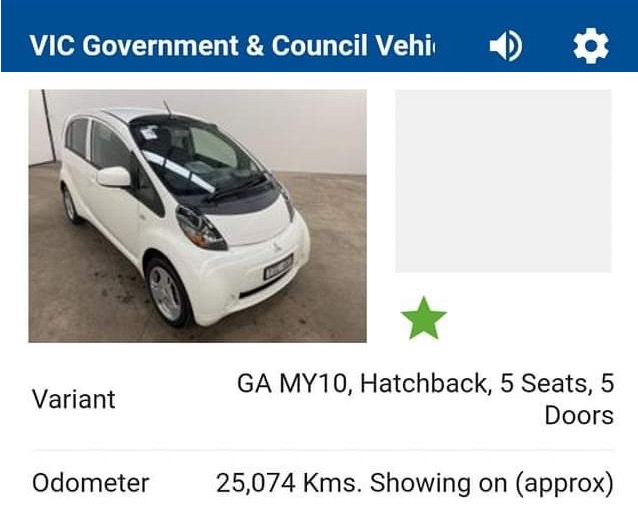
For $10,200 this was a bargain.
With more than a passing interest in things automotive, I’m used to classic cars that go up in value. Almost anything with a chrome bumper commands a premium these days (except a Galant Wagon).
So, while you can rationalise the Mitsubishi iMiev as a classic because they’re the first mass-produced EV of the modern era, they’re equally just unknown and unloved used cars that are defying gravity by appreciating; because they’re electric.
Like many iMievs owned by public authorities or early adopters, these two have led a fairly leisurely life. But we’d best leave the jokes about sheltered workshops alone as I wouldn’t want to throw shade on the iMiev. The dealer enthused about the comprehensive service history, and I burst his bubble a bit by observing they must have checked the lights and wipers each year. As it turns out, they didn’t check the tyres because I had to pump them up myself.
Public service announcement
Tyre pressure matters. If you’re in doubt, pump them up because if you make an error, more is better than less.
Why Didn’t I Get One Earlier?
When the i-MiEV was launched, I’m told you could only lease them. In 2010 that was $1,740 a month over a three-year term. Interestingly the government inspector who checked my vehicle ID last week remembered they had some shopped around a few departments, but he wasn’t allowed to have an i-MiEV.
This is a case in point as to why we should retain public ownership of utilities. I could never afford the $62,000 lease or $48,000 new-car-price, but government fleet buying power can put new EV technology into the second-hand market for normal people to buy.
Now demand is rising, people are importing EVs privately. Organisations such as The Good Car Co. have been bringing in the ever-popular Nissan Leaf from Japan, while some of the “performance” car importers are happy to co-ordinate other electric vehicles such as the iMiev’s boxier brother, the Minicab van. The last one of those I saw for sale here was wrapped in pink vinyl and commanding $20 grand… but at least you could sleep inside it, unlike a dual cab ute.
See exhibit A :

You could buy an iMiev van for each day of the week and still have enough for a house deposit… or you could have this garden shed with diamond stitch seats and no bed.
What Have I Learnt In The First Week?
- DO NOT LOOK AT CARSALES. Seriously, after months of nil listings, there will be another two turn up that are much cheaper. I’m clinging to the fact mine is the lowest mileage I’ve ever seen.
- Don’t leave the interior light on. If the 12-volt “car” battery is flat, then nothing works – despite the traction battery being charged.
- The headlights are quite good. I’m a student of car lights and have a visceral reaction to those horrible illegal drop in LED replacements.
- Range is low: In mixed traffic, reasonably flat terrain, some 110 kph highway cruising and air conditioning, 75 km was a comfortable range for my i-MiEV. Bear in mind the original data for the car claimed 100 or 155 km depending on whose standard you applied.
- Range can be extended: Local legend Graeme Manietta in Brisbane has launched the i-MiEV battery upgrade to get over 200 km of real-world motoring. That’s double the original range, which is great for the cars still running around.
- Peugeot and Citroen sold them in Europe badged as the iOn and C-Zero respectively… and i-MiEV’s are cheap there.
- They’re selling in the USA right now, used, for comparable sums to ours.
- Only 250 odd units came to Australia, and the earlier i-MiEV had an infotainment screen, keyless entry and nicer-looking wheels.
- The tyres are pretty weird sizes, (like a space saver spare that it doesn’t actually have) so despite the slight impact on range, changing wheels might be on the agenda.
Stand By For Updates
I haven’t been washing the i-MiEV twice a week like my Dad does when he gets a new car, but there’s probably enough enthusiasm to keep you posted on what it’s like to live with a “vintage” electric car. So far, it’s proven its worth and if the boss will give me the day off, I’ll load the generator on board and see just how far it goes before I have to make my own petrol powered electric car meme.
I lament I missed out on the first EV I really wanted. We think it’s a 1906 Baker electric and $35,000 AUD would almost have bought it, plus freight and taxes. I would have loved to see how this goes as a restored car. However, I would swap the ~150 kg lead acid battery for modern chemistry to see how much difference that makes to its range.

Baker Electric c.1906 20 volt motor included. On a US site for $20k USD. Not much to work with? Actually, there wasn’t much in the first place. The motor is in that blue tub.
These Edwardian-era electrics were quite popular but hamstrung by the lack of electricity outside the city. It seems charging infrastructure has always been an issue, just as water availability limited the range of steam cars.
The early days of infernal combustion engines, though plagued with unreliable ignitions and mechanical failure, were made practical by fuel transported in four-gallon tins packed in pairs in a timber box, and hauled by horses to your nearest chemist shop or blacksmith.
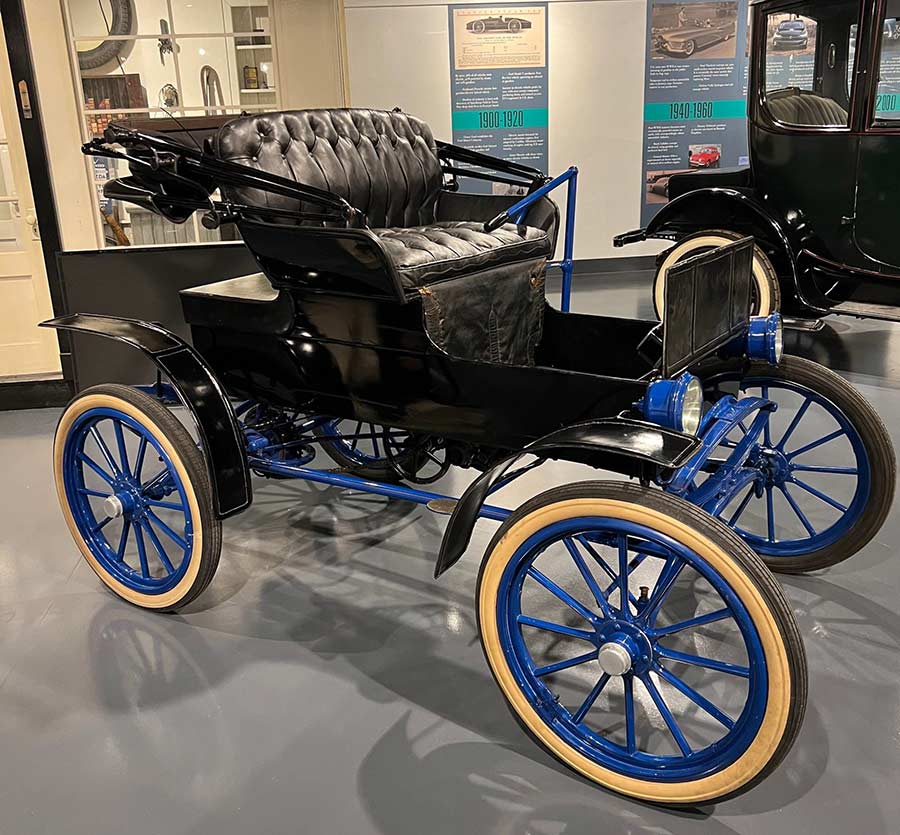
A real horseless carriage. Iimage: Bill Lillie
For now, you too can have a 2011 Mitsubishi i-MiEV priced at $17,990 drive-away with just a tad over 32,000km on the clock. Listed in late November, John Raffaele is standing pretty firm on his price because some mug already paid much the same for a white one he had. Sorry.

Original Source: https://www.solarquotes.com.au/blog/australia-cheapest-electric-car/



